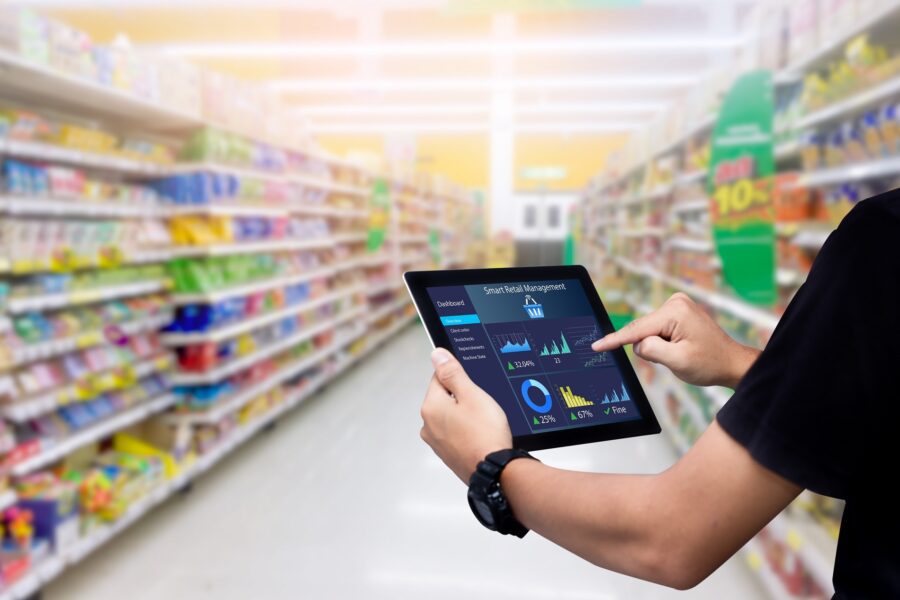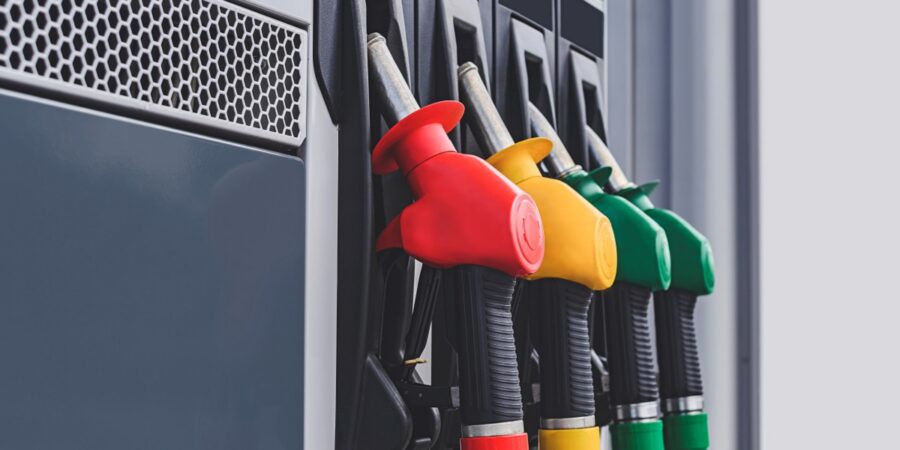
Retail
D2C vs. Traditional Retail: What’s the Best Model for Your Business?
Written by: Parcel Pending
6 Min Read
Published: April 20, 2022
Updated: March 31, 2023
D2C vs. retail: which is the better business model? What’s the difference between them? And which is the better option for your business?The D2C e-commerce market exploded during the pandemic as consumers were house-bound and took to online shopping to fulfill their grocery, wardrobe, home goods, and grooming needs. Many discovered new brands through D2C marketing, especially direct sellers – who were better positioned for ordering, communicating, and fulfilling online sales. eMarketer estimates that 103.4 million consumers will buy from a D2C consumer brand in 20221!
D2C vs. Retail: A Comparison
| Key Parameters | D2C Model | Traditional Retail Model |
| Customer Journey | Connect via social media, influencers, email & cause marketing | Interpreted through the eyes of the traditional retailer; customer interaction primarily takes place in a physical store |
| Customer Data | Business owns & understands data; introduces new products based upon direct customer input and D2C sales, increasing brand loyalty | Difficult to obtain with third-party privacy laws |
| Branding & Messaging | Complete control; boosts awareness and customer retention | Retail partners control the message |
| Supply Chain Logistics | Goods go directly from manufacturer to consumer, with less chance of disruption | Average of 6 steps for goods to reach the consumer; subject to more interruptions |
| Pricing & Revenue | D2C strategy has consistent/predictable revenue model due to subscriptions; price integrity & high margins | Manufacturer suggested retail price; retailer determines mark-ups; margins unpredictable; intermediaries & commission costs |
| Personalization | Hyper-personalized customer experience based upon data, which further cements loyalty | Reliant upon mass marketing |
What Is Direct-To-Consumer (D2C) Retail?
Direct-to-consumer brands (D2C) cut out the middleman (or men) by selling a product or service directly to the end customer rather than going through a wholesale supplier or retailer. A D2C brand also typically manages order fulfillment and distribution directly.
Ironically, digitally native brands are now opening up physical retail stores too – including Warby Parker, Allbirds, Rothy’s, Bonobos, and Glossier. As to the rationale for physical retail stores, Web Smith, founder of 2 PM, sums it up this way, “The acronym ‘DTC’ also includes sales through stores that you own. What few consider is that customer acquisition costs are typically lower in owned, physical footprints. But for it to work, the brand must be strong. And no Facebook ad can buy a strong brand.”2
Comparing D2C vs. Traditional Retail Model
Comparing the two sales models demonstrates why even established consumer product goods are trying to sell directly to the consumer.
Customer Journey
Focusing exclusively on the distribution model for D2C brands overlooks the way these online brands have permanently changed the customer journey. They have created a different and modern customer experience; they connect with consumers via social media, leverage the power of email marketing, work closely with influencers, align themselves with causes close to their customers’ hearts, and develop strong brand personas that cement customer loyalty. This type of authenticity resonates well with Millennials and Generation Z. In fact, two-thirds of consumers today expect the ability to connect directly with brands3.
Consumer Data
With virtually all interactions occurring online, D2C marketers have significant amounts of customer data that can help them determine what works and what doesn’t. Digitally native brands can harness the power of their data to recommend new products, test headlines and promotional offerings, and upsell. By virtue of their good social listening and communication, these brands can also uncover unmet consumer needs, allowing for innovation and introduction of new products more easily than with using a traditional business model. However, with recent privacy law changes, it’s more difficult for brands to retrieve and monetize third-party data.
Supply Chain Logistics
The traditional retail model consists of five steps: goods coming from the manufacturer to a wholesaler to a distributor to a retailer and then the consumer. When goods come directly from the manufacturer to the consumer, the supply chain process is shortened and subject to fewer disruptions.
Branding & Messaging
In traditional retailing with brick-and-mortar stores, consumers often “discover” a new brand in-store. With D2C, customers are targeted and retargeted with ads in which all of the brand messages are tightly controlled.
Pricing & Revenue
Since many D2C brands use a subscription business model, their revenue is relatively predictable. In the case of Dollar Shave Club, the numbers paint a clear picture: after one year, 50% of all customers were still using the service and after 2 years, 25% of all sign-ups were still members4. Further, many brands are only available online and exclusively through their website which prevents price shopping and preserves price integrity. Often, with traditional retailers, consumers use the retail store as a showroom and then shop for the best price.
Personalization
D2C brands have all of their customer data at their fingertips to better generate personalized messages and recommendations that are typically not available (or harder to come by) with a traditional retail model. By 2020, 51% of consumers expect that companies will anticipate their needs and make relevant suggestions before they make contact.
Leveraging the Power of Smart Lockers
With the D2C business model growing more popular and shipping problems persisting, savvy brands are looking into electronic locker solutions that allow for easy customer order pick-ups and returns. Most importantly, this customer experience dovetails with native brands that insist on a positive shopping experience.
Since it typically takes less than thirty seconds to retrieve an order via a smart locker, customers rate their shopping experience higher than with other channels. Further, research shows that if the perceived wait time is less than two minutes, customers are four times more likely to purchase from the brand again.
The two-minute mark also remains magical when it comes to optimizing the returns process. Customers who collect their order from a smart locker and decide not to keep it are able to communicate with the brand and place it back into the locker for a no-hassle return.
Open Network Locker Hubs
A new distribution point for customers to retrieve packages and online orders, often referred to as open network locker hubs or PUDO (Pick Up, Drop-Off) points, is emerging. Whereas most retail lockers are located within proprietary retail stores (think Whole Foods) or within a multifamily apartment community, an open network locker or PUDO point is a parcel locker that allows for any consumer to pick up or return a package and is typically accessible 24/7.
Often located in densely populated cities, these locker hubs are completely agnostic: accessible to any retailer, carrier, or consumer. As Frank Coccia, founder of PUDO explains, “PUDO puts the consumer in control of their parcel, where and when they want it. There are no missed deliveries due to the consumer not being home or even worse, the individual is home and did not hear the knock or doorbell or simply did not get out of the shower on time.”5
As digitally native brands disrupt the traditional retail model, they are looking for partners that embrace technology while boosting customer satisfaction. Clearly, smart lockers can play an essential role. To discover how smart lockers can work for your business, contact a Parcel Pending by Quadient customer service representative today.
Sources:
- eMarketer Editors. “US Direct-to-Consumer ECommerce Sales Will Rise to Nearly $18 Billion in 2020”. eMarketer, April 1, 2020. https://www.emarketer.com/content/us-direct-to-consumer-ecommerce-sales-will-rise-to-nearly-18-billion-in-2020
- Moore, Kaleigh. “11 DTC Brands Opening Physical Retail Stores in 2021 (And Why)”. Shopify, May 13, 2021. https://www.shopify.com/retail/dtc-to-brick-and-mortar
- “Traditional Retail Business Model vs. Direct-to-Consumer Business Model”. Locus, n.d. https://locus.sh/resources/direct-to-consumer-business-model-vs-traditional-retail-business-model/
- “D2C Brand Marketing 101 for 2022”. Assiduus, December 20, 2021. https://www.assiduusglobal.com/2021/12/d2c-brand-marketing-101-for-2022/
- Waddell, Nick. “PUDO CEO Frank Coccia talks to Cantech Letter”. Cantech Letter, June 9, 2016. https://www.cantechletter.com/2016/06/pudo-ceo-frank-coccia-talks-cantech-letter/



